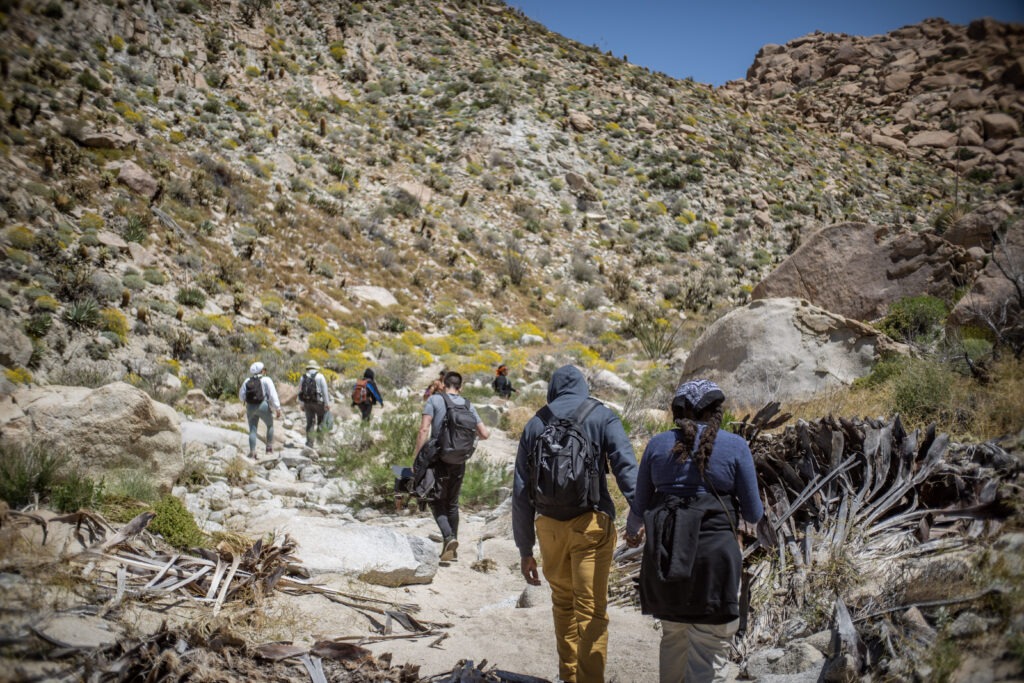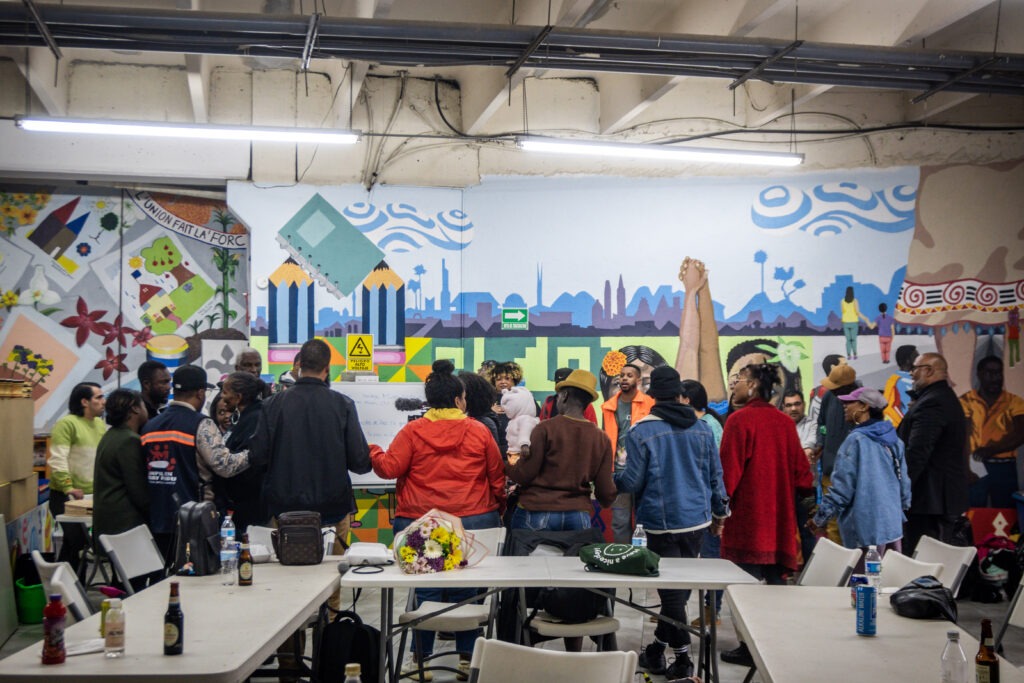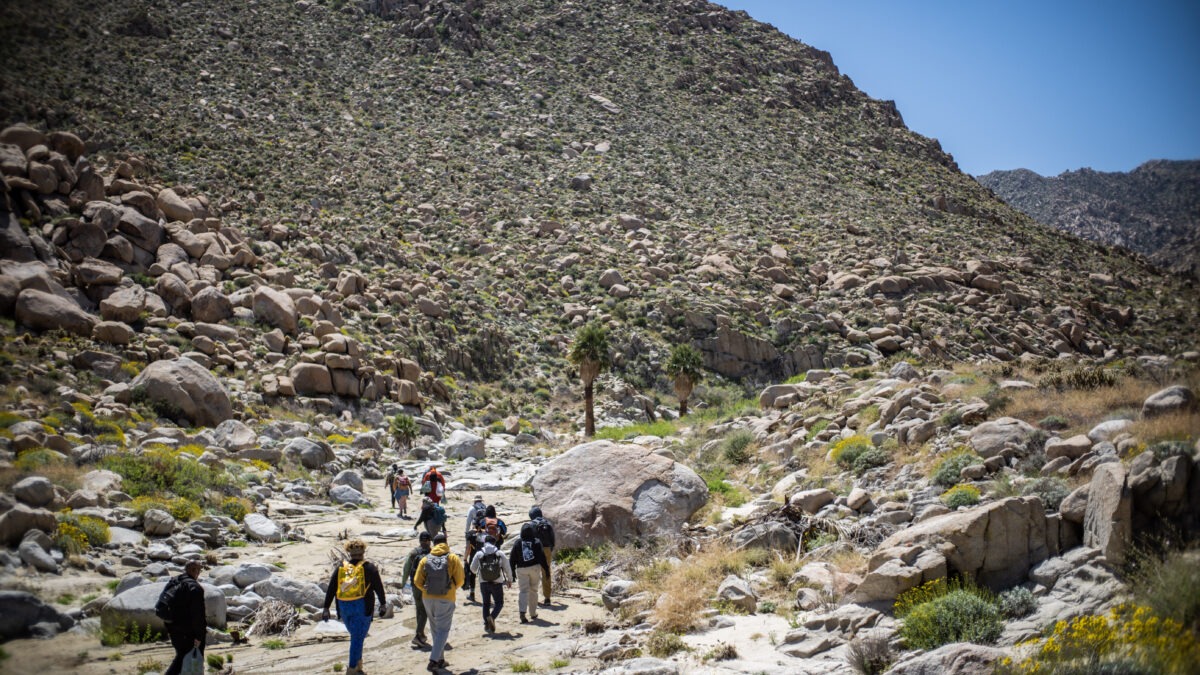This post is also available in: Español (Spanish) Kreyòl (Haitian Creole)
Amid the red and brown hues of the desert landscape, Kristen Rome remembers writing a note on a jug of water for travelers who would soon be surreptitiously making their way across the U.S. border with Mexico and into southern California. She wanted to give them hope.
“I know I wrote, ‘You are loved,’” the native New Orleanian said. “And I think I wrote something like, ‘Keep going.’”

Rome, who is Black, is the executive director of the Louisiana Center for Children’s Rights, and she had traveled to the southern border to better understand the plight of migrants coming into the U.S., often with nothing more than the clothes on their backs. She wanted to bring what she learned there back to New Orleans, where she was seeing more and more Latinx families becoming embroiled in the city’s judicial system.
That trip in April 2023 had been put together by Our Voice Nuestra Voz (OVNV), a nonprofit advocacy group started in 2015 and a W.K. Kellogg Foundation grantee, as part of their core mission: to bring New Orleans’ Black and Brown communities together, improve their understanding of each other and unite them in an effort to improve the quality of life for the people and cultures that are so integral to the lifeblood of the Crescent City.
The border trip intentionally commingled 20 Black and Latinx leaders from New Orleans, “to understand that (immigration is) not just a ‘Brown’ issue,” said OVNV founder Mary Moran.
New Orleans is a port town and the history of its people is full of movement and culture-melding. While many Black families were displaced by Hurricane Katrina in 2005, New Orleans remains predominantly Black, at 58%. And the Latinx population continues to grow, making up about 6% of residents in 2022 after adding more than 7,000 people since 2000, according to The Data Center, a nonprofit research hub that tracks demographic data across southeast Louisiana.
Nevertheless, these different populations in New Orleans face many of the same challenges brought on by disproportionate poverty, systemic racism, lack of access to education and few options for upward economic mobility.
Moran, who came to New Orleans from South Central Los Angeles and has both Black and Brown forebears, sees unity as a means to better position people to confront and overcome these barriers. Bringing mutual understanding to these cultures cannot only bridge divisions but empower people to catalyze change, she said.
“I am a hopeless romantic about our future,” she said, “and I think more people are catching that feeling.”

OVNV’s model is decidedly grassroots, with its members driving its strategy of building an “infrastructure of care.”
After Hurricane Ida in 2021, OVNV designated neighborhood captains to manage its outreach, an effort that fed and cared for hundreds of displaced families during those first weeks of recovery.
Emulating the time-honored tradition of Social Aid and Pleasure Clubs established in New Orleans during the 1800s for Black families to collectively cover health and funeral expenses, OVNV founded the Community Defense Fund during the COVID-19 pandemic. It raised and gave $100,000 to Black and Brown families hurt by the ensuing economic shutdown. After Hurricane Ida struck in August 2021, $220,000 from OVNV has gone to families facing housing insecurity or uncertainty over immigration status.
OVNV replenishes that fund by hosting the “Black and Brown Get Down” every year. It’s a soiree that not only raises money, but also shares the vibrancy of Latin and Black cultures – especially the tradition of Mardi Gras Indians, a cultural touchstone that also goes back to the 19th century. Black New Orleanians who belong to these community-based “tribes” sew beaded suits and feathered headdresses that simulate traditional Native American garments and parade the streets on certain holidays. Its origins aren’t certain, but a prevailing theory is that it comes from freed enslaved people paying homage to the Native Americans who helped them escape bondage.
OVNV is also making inroads in New Orleans’ schools, which are predominantly Black but experiencing a larger influx of Spanish-speaking children – the fastest growing section of New Orleans’ student population. It was worked to build the capacity of educators and support staff in 10 schools to better serve these students and their families, including providing professional development centered on creating empathy and cultural understanding.
The commonality of challenges faced by Black and Brown communities was evident on the border. Rome was surprised by the number of Black immigrants, mostly Haitians, making their way into the U.S. through Mexico after traversing several countries on foot. It is a story she felt remains untold, and one that could cleave the Black experience to those of so many coming from Central and South America and finding their way to New Orleans.
“When the narrative is clear, and the story is shared,” Rome said, “there’s more ability to understand.”



Comments